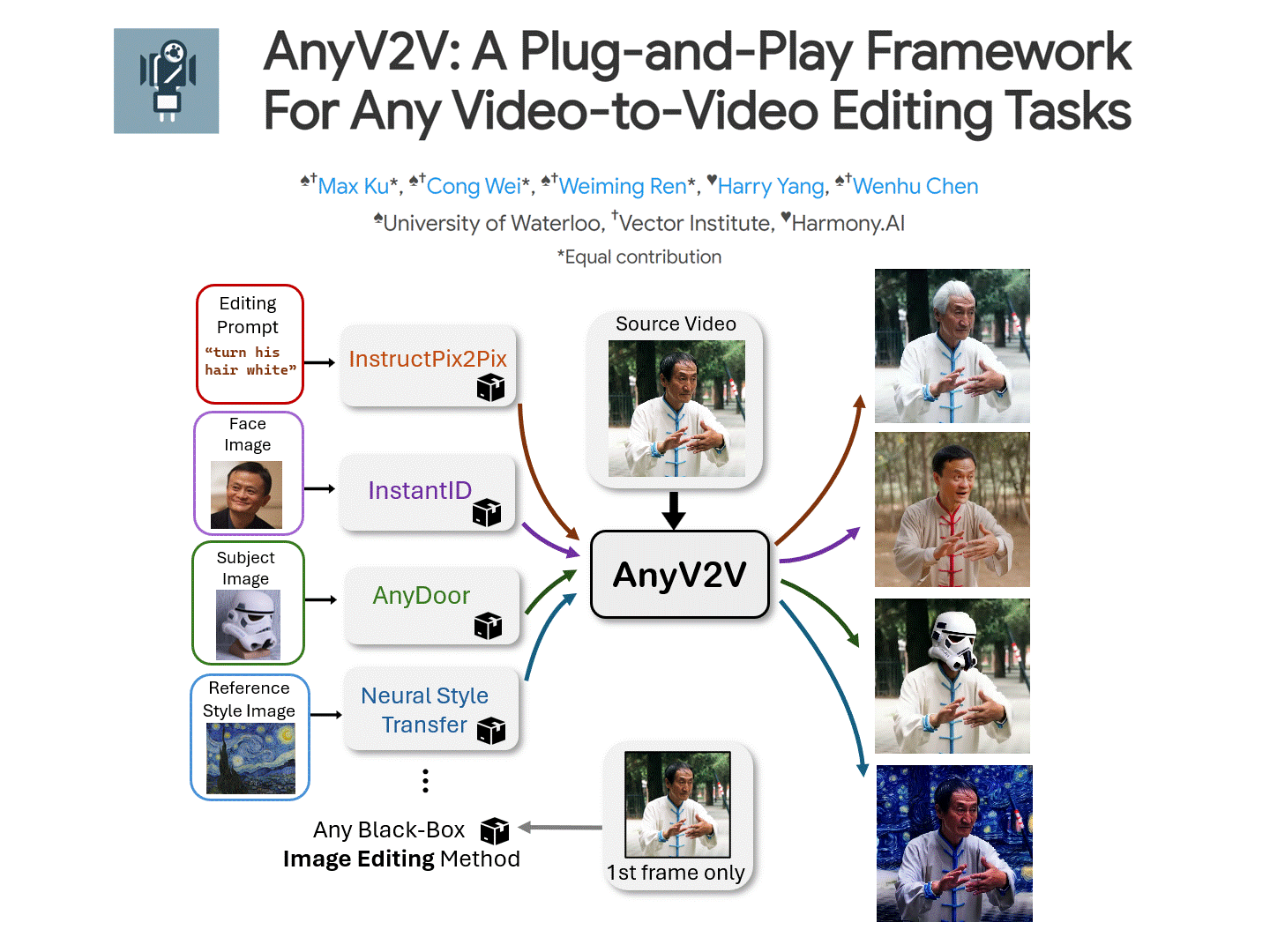Readme
AnyV2V

Introduction
AnyV2V is a tuning-free framework to achieve high appearance and temporal consistency in video editing. - can seamlessly build on top of advanced image editing methods to perform diverse types of editing - robust performance on the four tasks: - prompt-based editing - reference-based style transfer - subject-driven editing - identity manipulation
🖊️ Citation
Please kindly cite our paper if you use our code, data, models or results: ```bibtex @article{ku2024anyv2v, title={AnyV2V: A Plug-and-Play Framework For Any Video-to-Video Editing Tasks}, author={Ku, Max and Wei, Cong and Ren, Weiming and Yang, Huan and Chen, Wenhu}, journal={arXiv preprint arXiv:2403.14468}, year={2024} }
